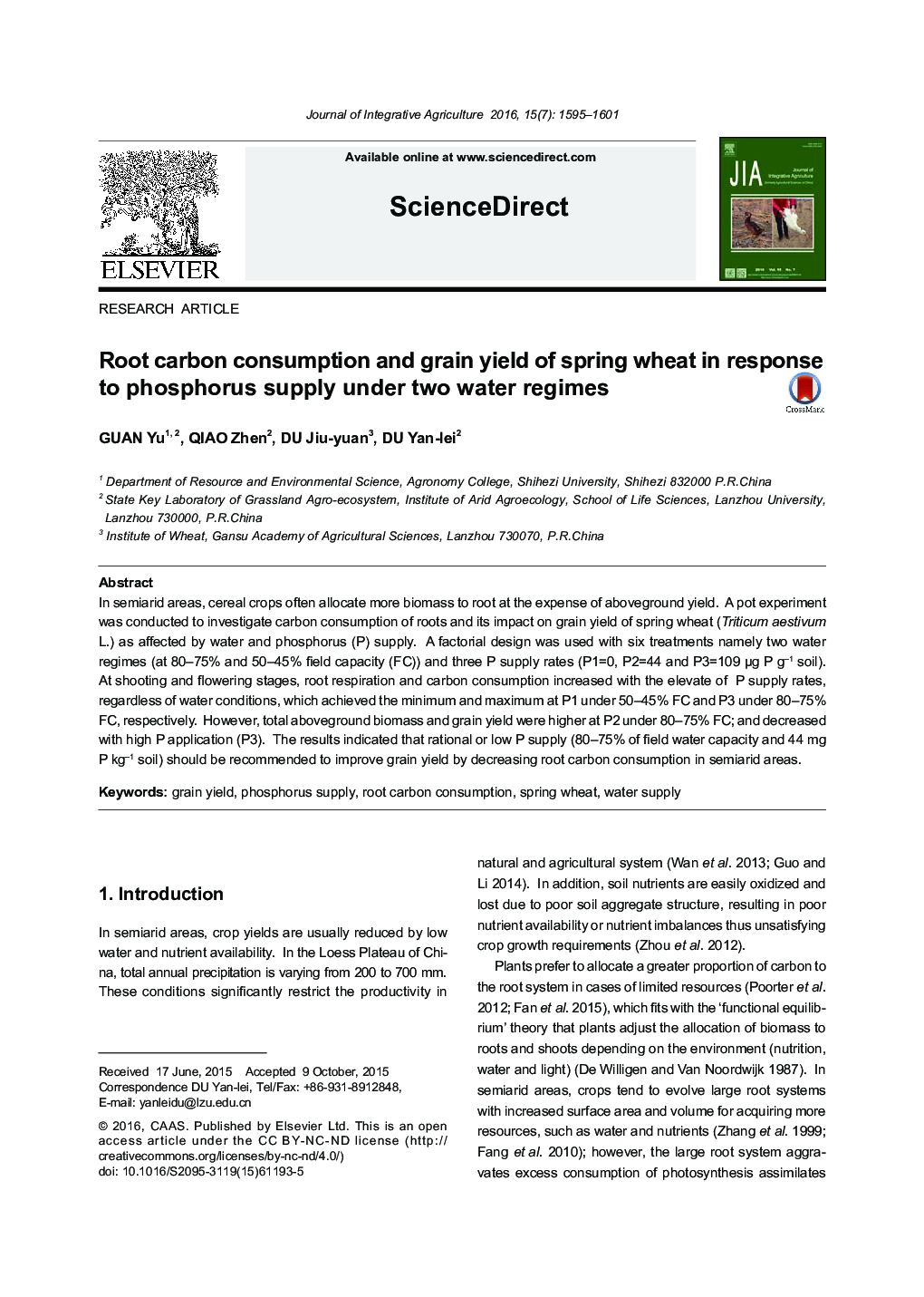| Article ID | Journal | Published Year | Pages | File Type |
|---|---|---|---|---|
| 10997798 | Journal of Integrative Agriculture | 2016 | 7 Pages |
Abstract
In semiarid areas, cereal crops often allocate more biomass to root at the expense of aboveground yield. A pot experiment was conducted to investigate carbon consumption of roots and its impact on grain yield of spring wheat (Triticum aestivum L.) as affected by water and phosphorus (P) supply. A factorial design was used with six treatments namely two water regimes (at 80-75% and 50-45% field capacity (FC)) and three P supply rates (P1=0, P2=44 and P3=109 μg P gâ1 soil). At shooting and flowering stages, root respiration and carbon consumption increased with the elevate of P supply rates, regardless of water conditions, which achieved the minimum and maximum at P1 under 50-45% FC and P3 under 80-75% FC, respectively. However, total aboveground biomass and grain yield were higher at P2 under 80-75% FC; and decreased with high P application (P3). The results indicated that rational or low P supply (80-75% of field water capacity and 44 mg P kgâ1 soil) should be recommended to improve grain yield by decreasing root carbon consumption in semiarid areas.
Keywords
Related Topics
Life Sciences
Agricultural and Biological Sciences
Agricultural and Biological Sciences (General)
Authors
Yu GUAN, Zhen QIAO, Jiu-yuan DU, Yan-lei DU,
